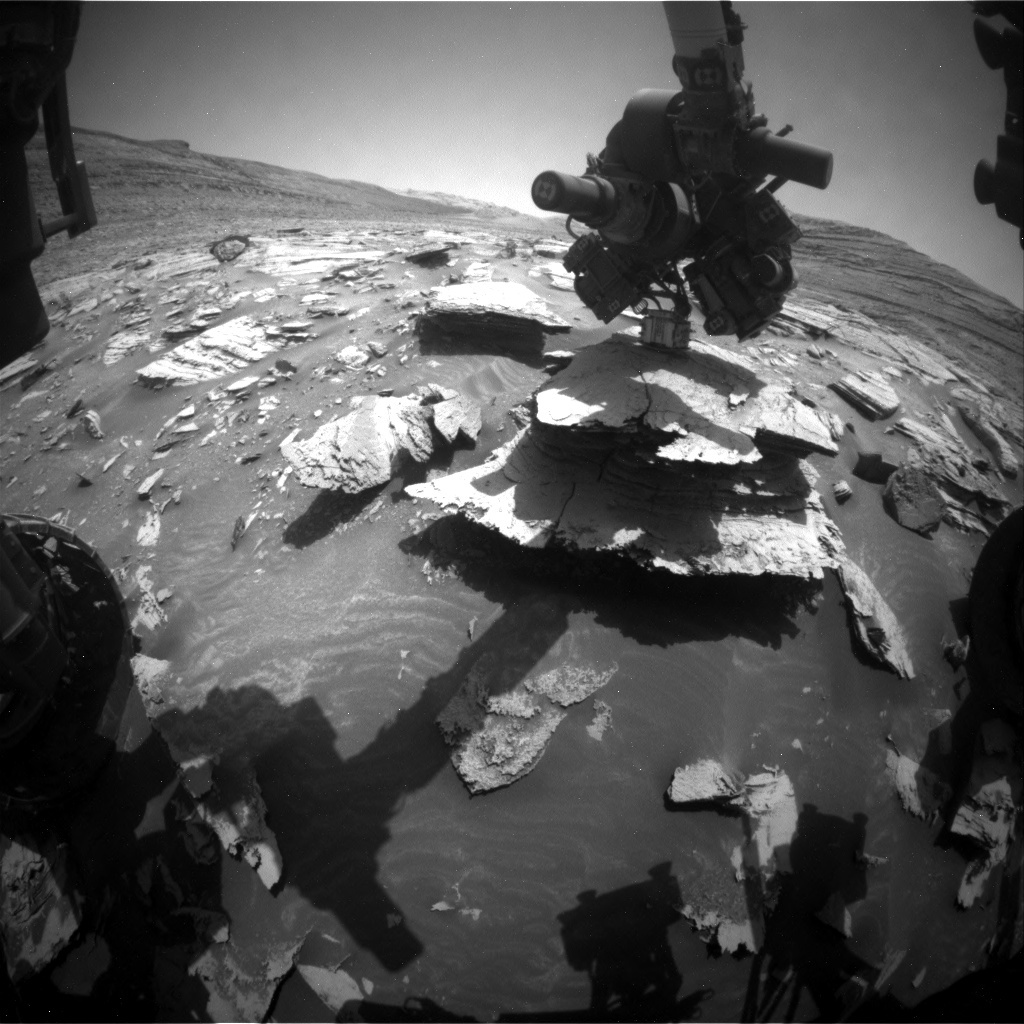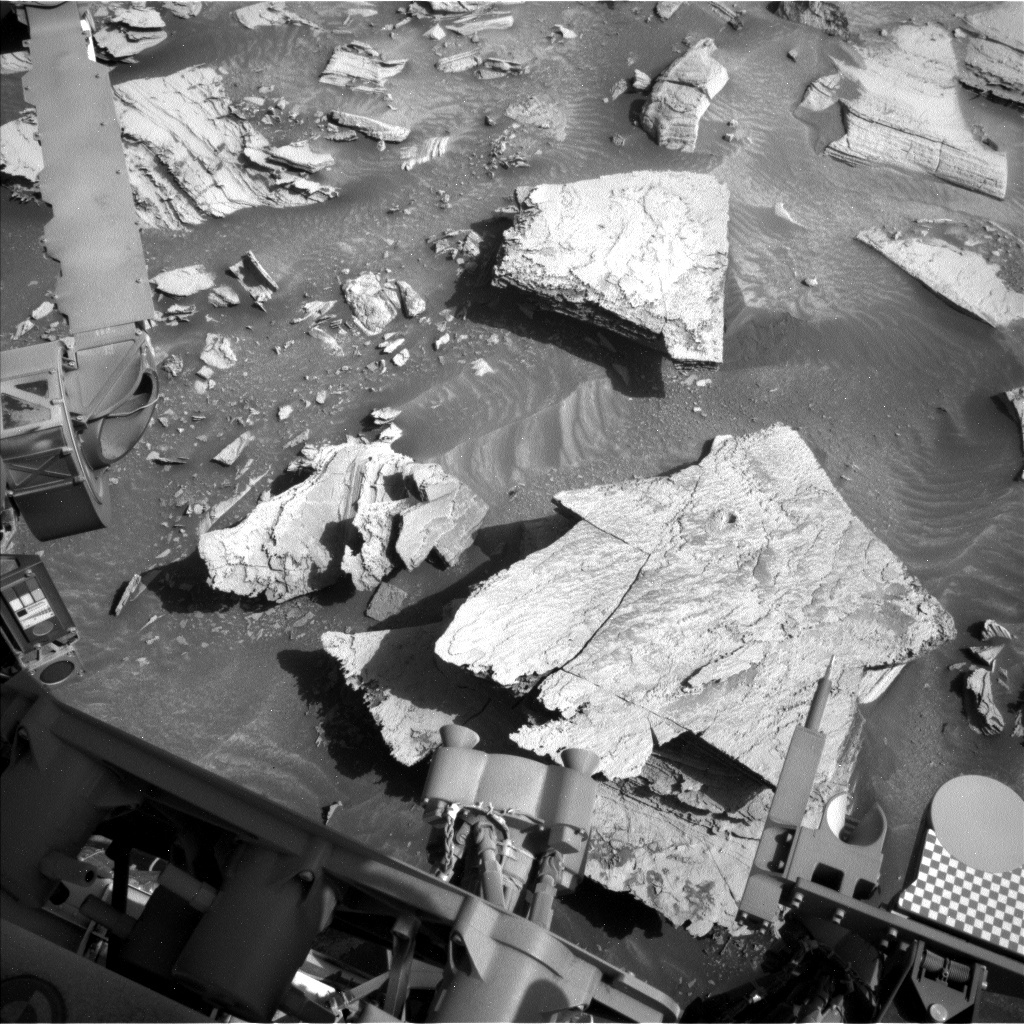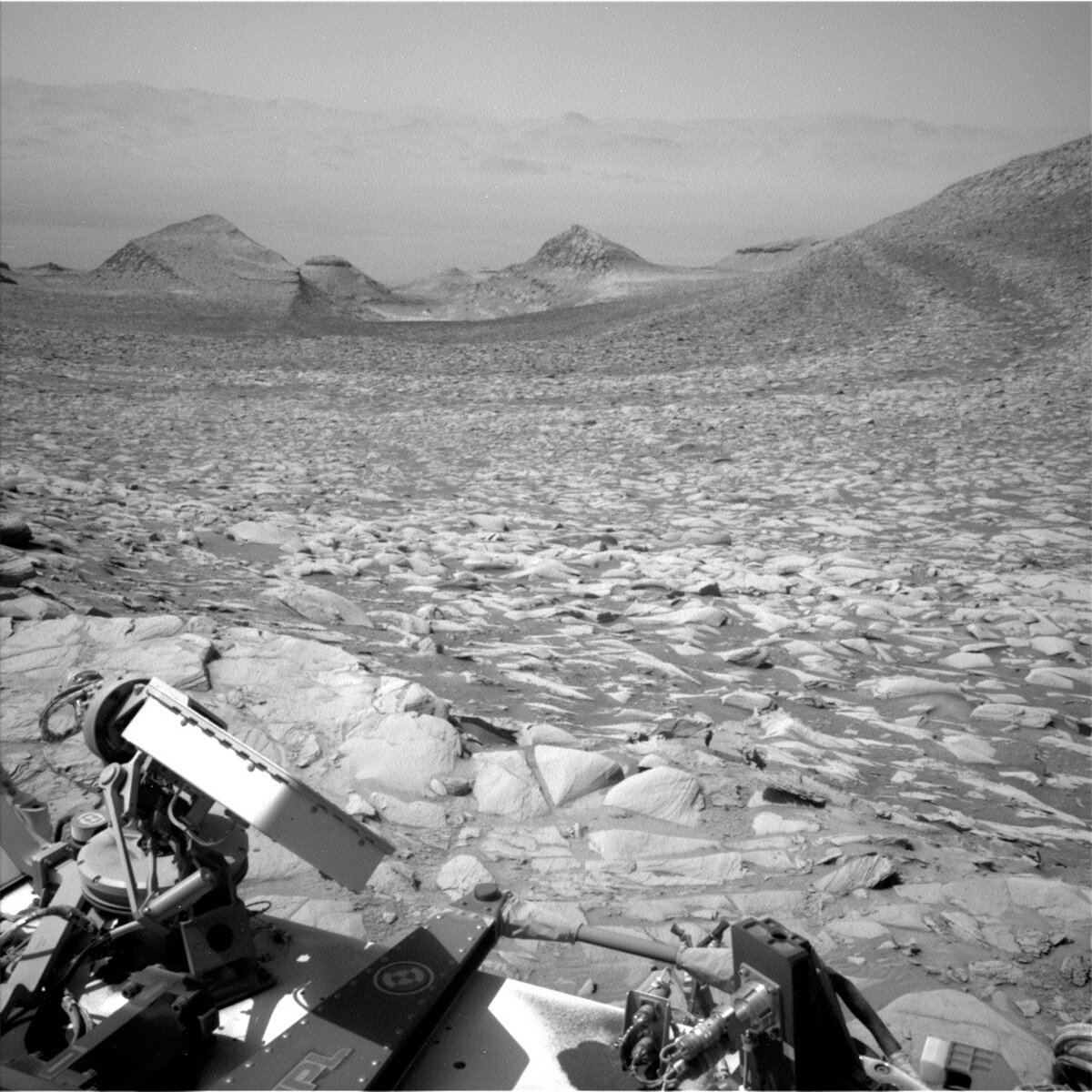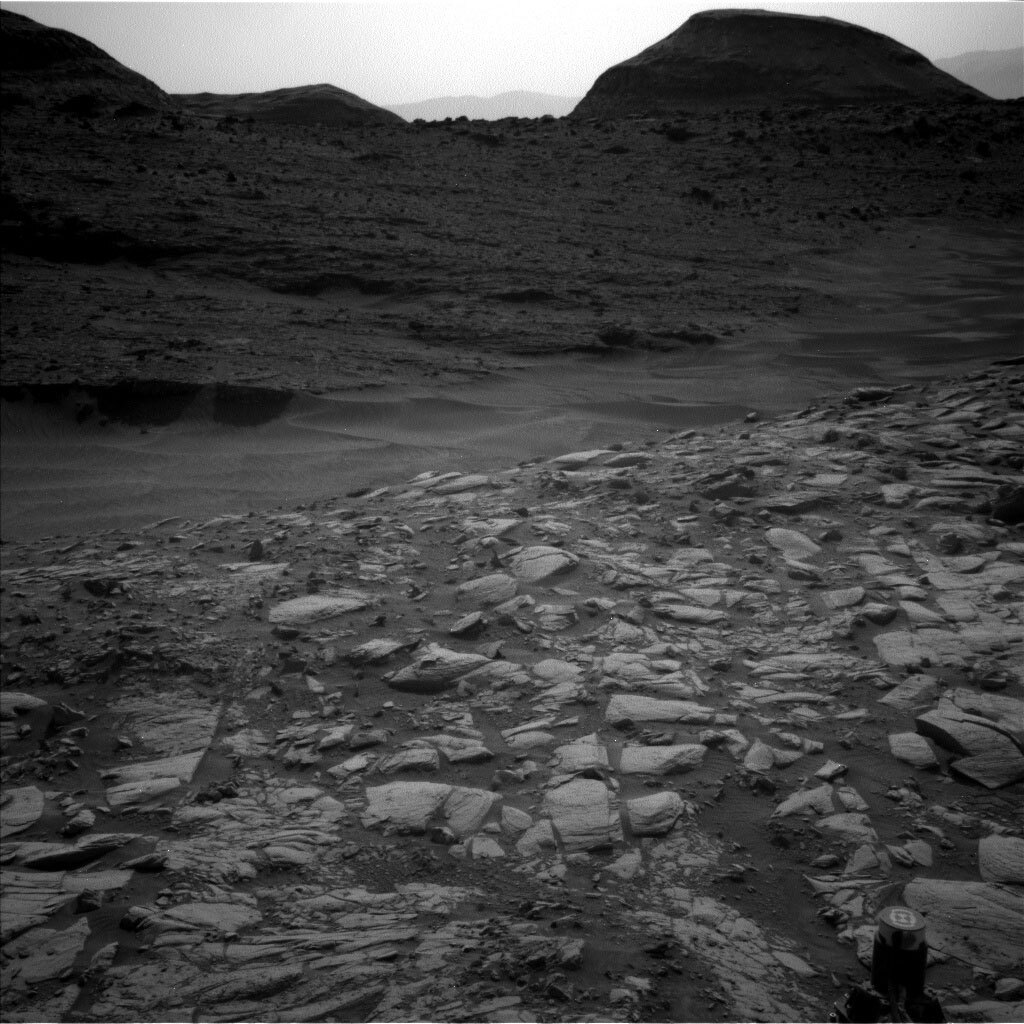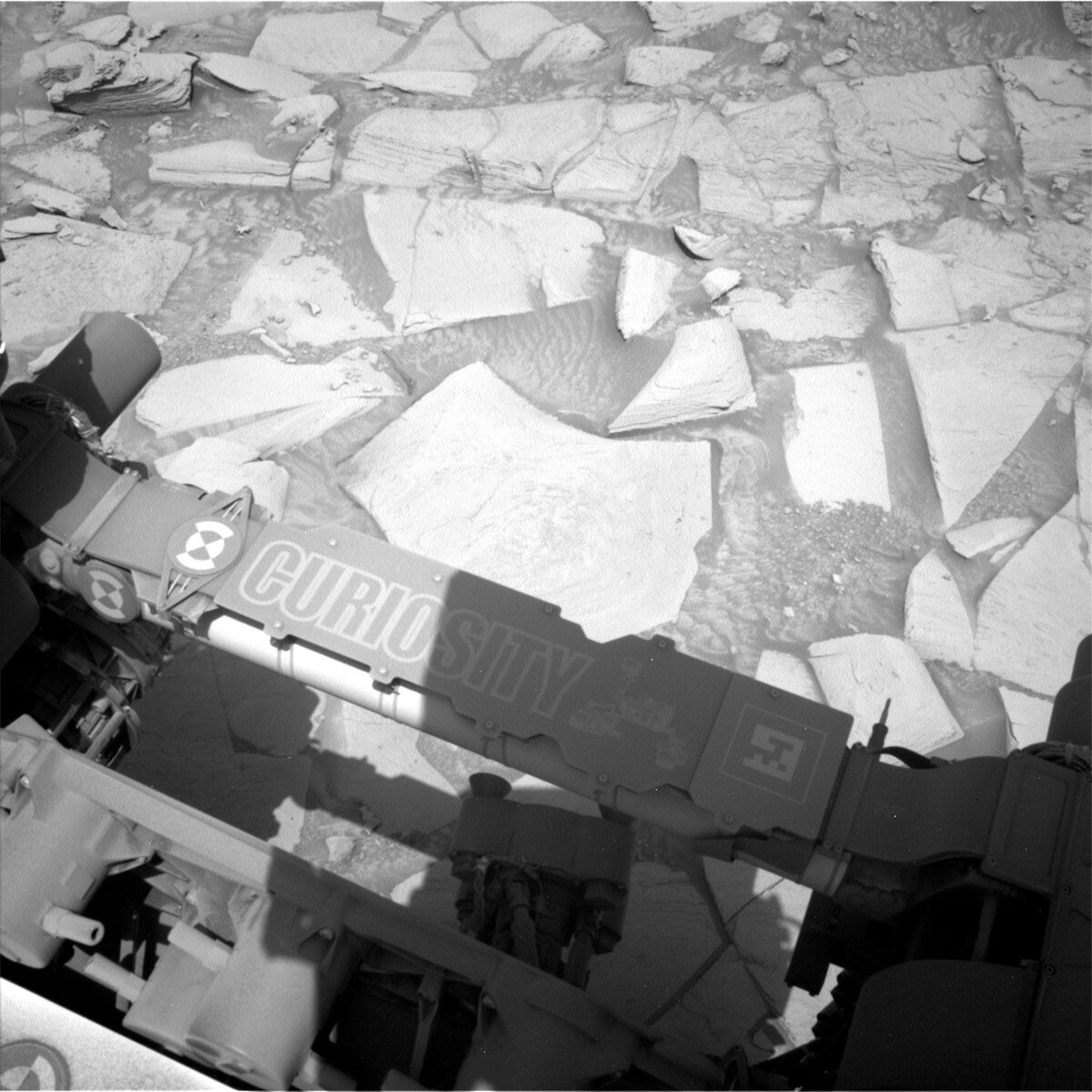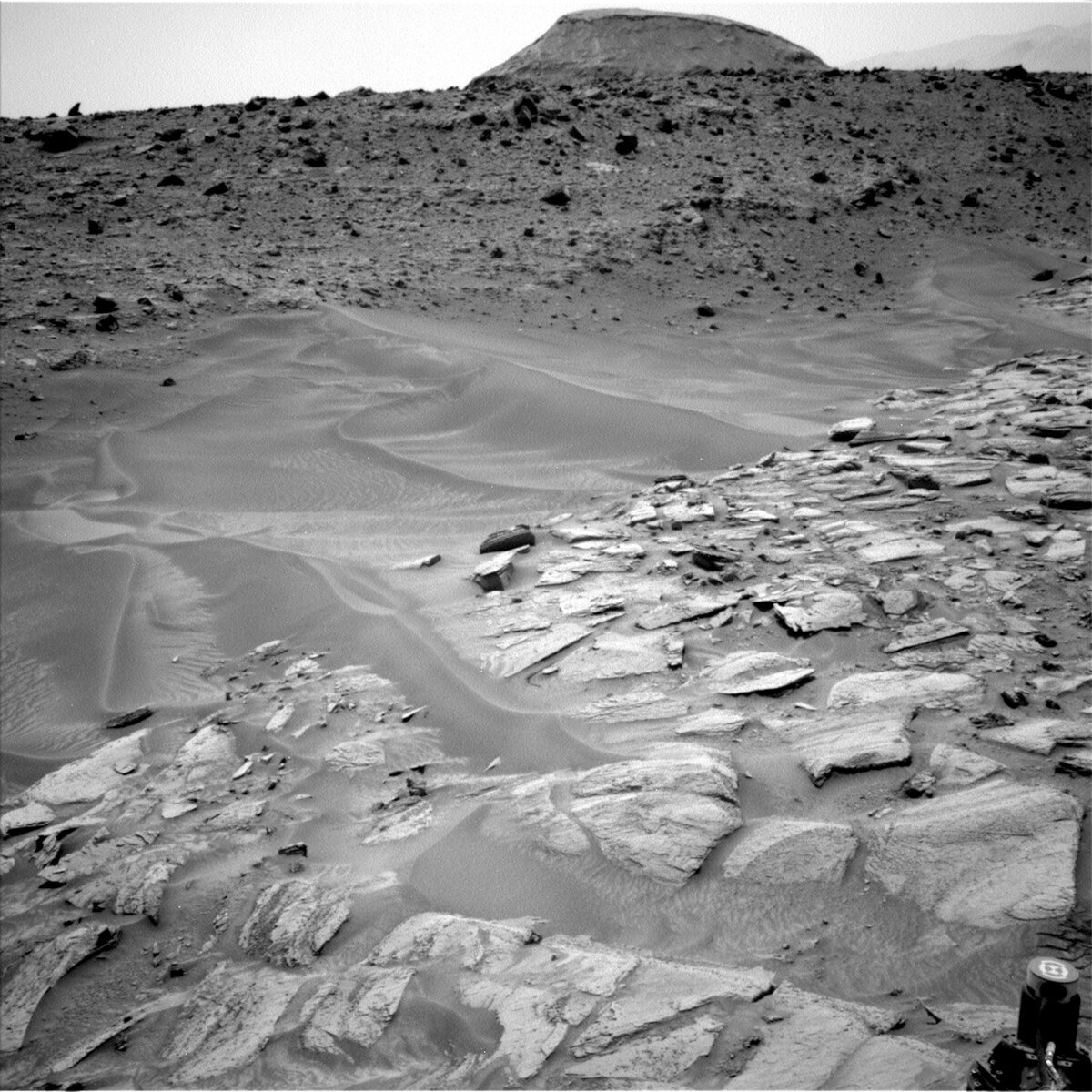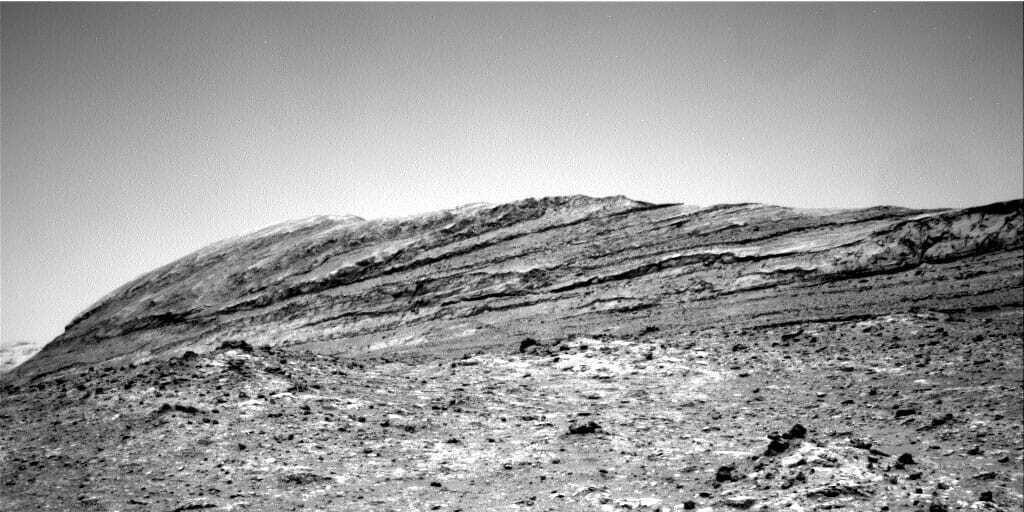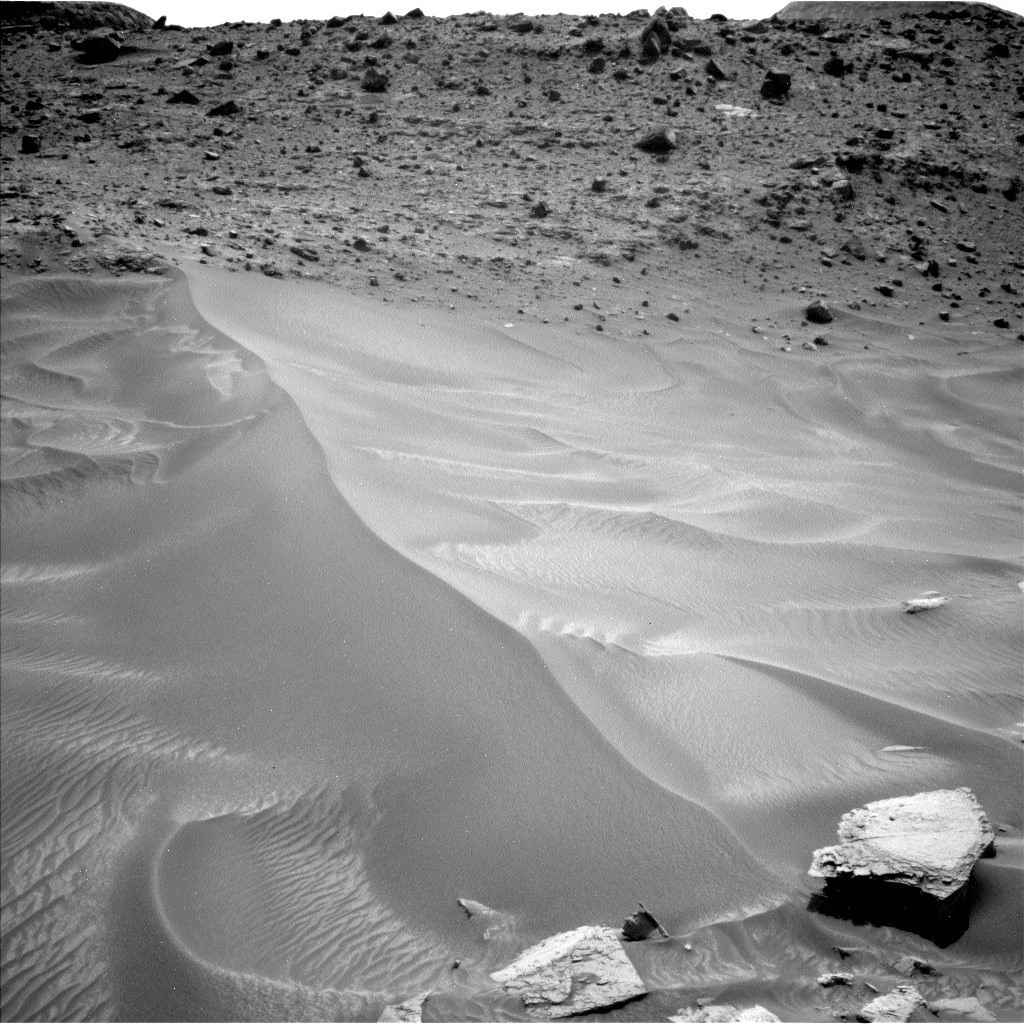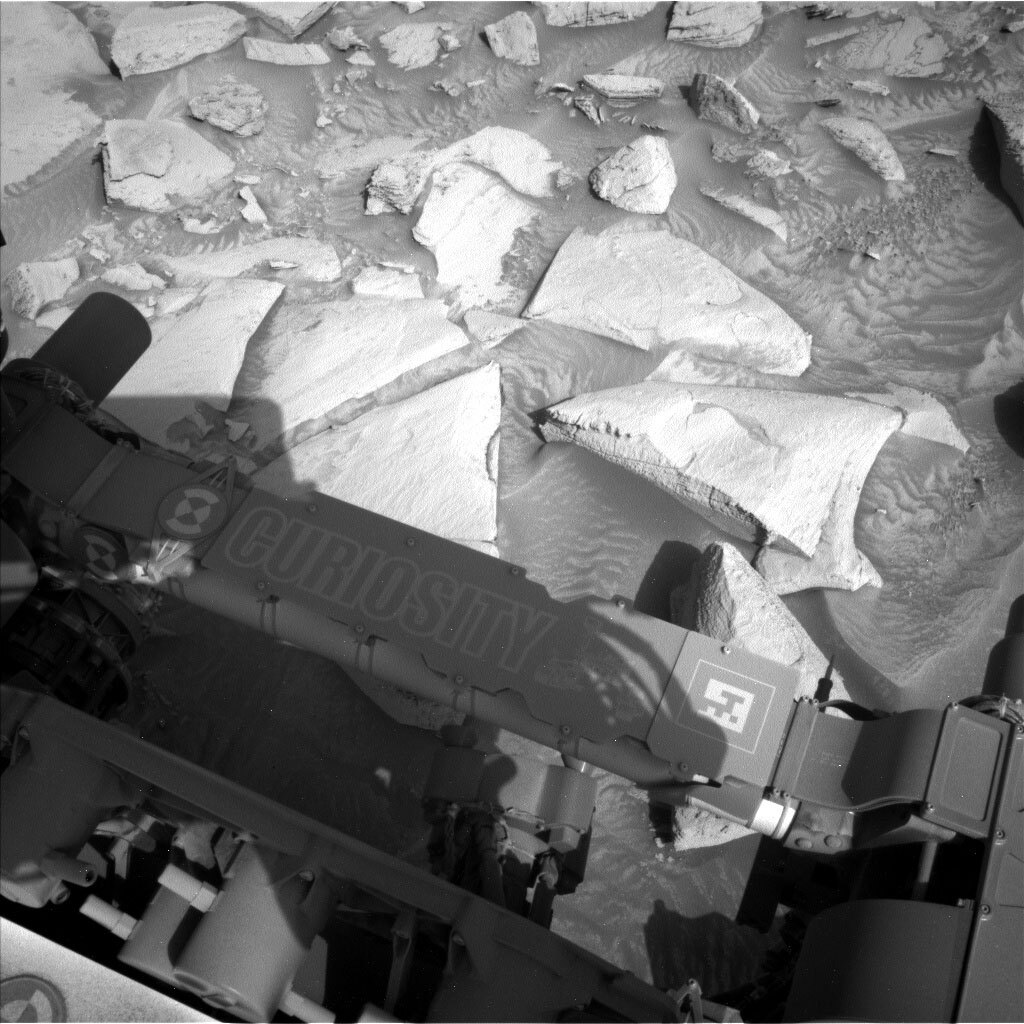February 29, 2024
Sols 4112-4113: In The Presence Of Royalty
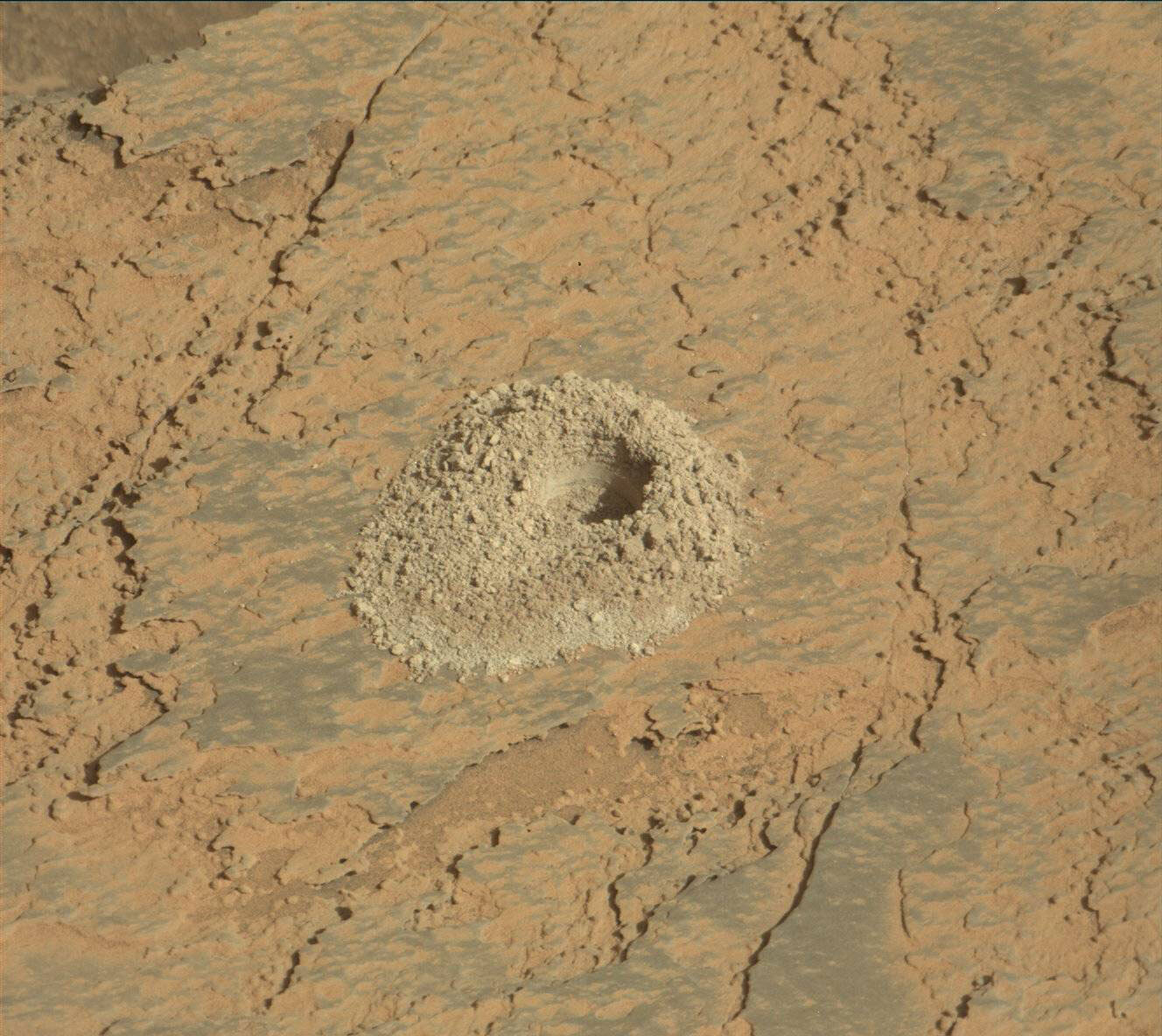
This image was taken by Mast Camera (Mastcam) onboard NASA's Mars rover Curiosity on Sol 4107. Credits: NASA/JPL-Caltech/MSSS. Download image ›
Earth planning date: Wednesday, February 28, 2024
Over the weekend Curiosity successfully drilled into ‘Mineral King!’ The drilling stopped a little short of the target depth, however we think there was enough sample to be sent for analysis. ‘Mineral King’ has now been analyzed within the CheMin instrument, and we are awaiting the results. After we see those results tomorrow morning, we will make the decision if we also want to analyze the sample with the Sample Analysis at Mars – SAM – instrument. The first sol of this two sol plan contains the preconditioning of SAM to optimistically get us ready to deliver the sample to SAM on Friday and, during this time, Curiosity stays put next to the drill hole, awaiting the results of analysis. This leaves plenty of time to take in the beautiful views of our kingdom.
Today the science team planned a whole host of observations. Mastcam will continue to admire our noble drill hole by taking a single frame of ‘Mineral King’ for a MAHLI wind assessment, as well a single frame of some sandy ripples in the workspace called ‘Florence Peak’ as part of a change detection campaign. Mastcam will also look further afield taking a 9x2 mosaic of ‘Wilkerson butte’ to identify the sedimentary structures here and will then look back and take a 13x2 mosaic of an area we’ve previously driven by named ‘Consultation Lake’ to search for a particular fracture pattern that’s of interest to the science team. On the second sol, Mastcam and Navcam are kept busy with photometry observations.
ChemCam has 2 LIBS targets in the plan. The target ‘Woods Lake’ is on the surface of a rock that looks similar to the drill hole Mineral King rock, with a second LIBS target ‘Lake Basin’ on an exposed layered surface of a nearby rock. The great thing about a drill campaign is we get the time to explore lots of rocks in Curiosity’s workspace! ChemCam is also targeting ‘Fascination Turret,’ part of the Gediz Vallis Ridge, with two long distance RMIs. Curiosity will spend more sols in the presence of royalty here at the ‘Mineral King’ drill hole as we continue with sample analysis and remote science observations throughout the week.

